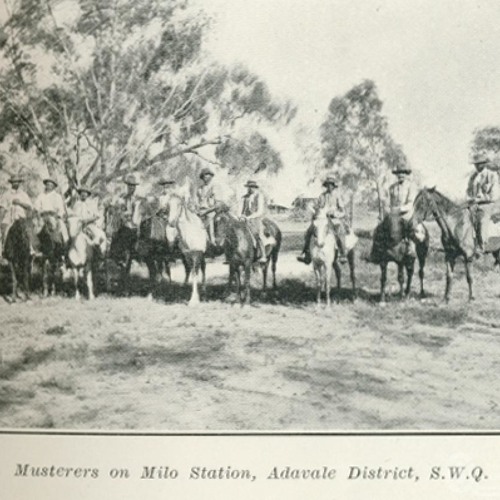James Mansfield Niall (1860 – 1941), my first cousin four times removed, was managing director and then chairman of the Australian pastoral company Goldsbrough Mort & Co from 1900 to 1935; he joined the company in 1896 and retired from the board in 1940.
In 1928 his portrait as chairman was painted by W.B. McInnes, a highly-regarded Australian portraitist, seven-times winner of the Archibald Prize.

From the Argus, Thursday 1 November 1928, page 5
From the Argus (Melbourne, Vic.), Thursday 1 November 1928, page 7:
MR. J. M. NIALL. Unveiling of Portrait. Friends of Mr J M Niall chairman of the board of directors of Goldsbrough Mort and Co Ltd attended the unveiling of his portrait painted by Mr W. B. McInnes, by the Lord Major (Sir Stephen Morell) at the offices of the company yesterday. Sir Frank Clarke, who is a director of the company, was in the chair. Sir Frank Clarke remarked that the occasion almost coincided with the thirtieth anniversary of Mr Niall's association with the company. When Mr. Niall first joined the company its finances, in common with those of many other business institutions, were in a rather precarious condition; now the shares were worth on the market two and a half times their face value. It was chiefly due to the ability and efforts of Mr. Niall that the company had been built up in the way it had been. Sir James Elder expressed the opinion that Mr Niall was the greatest asset the company had. He was a high-minded and honourable gentleman as well as a shrewd and capable business man (Applause). After the Lord Mayor had unveiled the portrait Mr W Forster Woods (chairman of the Stock Exchange) proposed the health of Mr. Niall. Mr. W. A. Gibson (general manager of Goldsbrough Mort and Company) supported the toast, which was honoured with enthusiasm. In reply Mr. Niall admitted that he had worked hard in the early days of the company, but one man could not have been responsible for its success; he had had the co-operation of a good staff and the confidence and help of the members of the board. It was a great pleasure to him that the board had unanimously appointed his son Mr. K. M. Niall, to take his place as chairman of the board during his projected holiday trip to England. Mr Niall was presented with a copy of the portrait, also painted by Mr. McInnes.
In 1962 Elder Smith & Co. took over Goldsborough Mort & Co. In 1981 Elder Smith Goldsbrough Mort & Co. Ltd merged with Henry Jones IXL to form Elders IXL. McInnes’s portrait of James Niall as Chairman of Goldsbrough Mort is now in the collection of the National Library of Australia, donated, presumably, by one of the companies involved in these mergers and acquisitions.
The copy of the portrait presented to J M Niall in 1928 is still in the family.
Related posts and further reading
- My post on The tristate tour February 2021 part 2 – when we travelled to Paringa on the Murray River among other places, includes some reminiscenses of J.M. Niall’s time at Paringa Station
- K is for Kenneth – In J M Niall’s reminiscences he records: when in 1878 Mr Kenneth Budge (who was manager of Gooyea Station in Queensland) died suddenly from heart disease getting out of bed, and my first cousin, J F Cudmore, on whose Station I was working, hurried me off to Queensland, without notice, to go up and take control.
- Trove tuesday : Daniel Budge – the death of his brother in law Daniel Budge; J.M. Niall was a partner of Daniel Budge for a time in the 1880s
- Margaret Steven, ‘Niall, James Mansfield (1860–1941)’, Australian Dictionary of Biography, National Centre of Biography, Australian National University, https://adb.anu.edu.au/biography/niall-james-mansfield-7835/text13605, published first in hardcopy 1988
Wikitree: James Mansfield Niall (1860 – 1941)










































































